Compared to tabs, reading standard notation is a complete pain in the arse. For some reason, there are a few ukulele books that use only standard notation (such as the Jumpin’ Jim books and some of the Ukulele Masters series). I thought I’d knock together a short post in the hope of making all those squiggles and splatters a little more decipherable.
There are certain similarities with tab such as rhythms and repeats (there’s a full guide to reading ukulele tab here). So I’m just going over how musical notation indicates pitch.
Like tab, there are a bunch of horizontal lines (known as a stave), but that’s where the similarity ends. Notes are indicated by the position of the dots: the higher up the stave a dot is, the higher the note. The dots can appear on the lines or between them. Each time you shift up a position, you go up to the next white key on the piano (C,D,E,F,G,A,B etc.)
Here are the notes as they compare to the tab
Whether the stems of the notes go up or down doesn’t make any difference at all.
The notes that fall in between the lines spell “FACE” from bottom to top.
The notes on the lines spell “EGBDF”. If you’re not familiar with the word ‘egbdf’, there are plenty of mnemonics to remember it such as Every Good Boy Deserves Football (or any other f-word you think a boy might enjoy).
On the uke, there are two notes that fall below this: C and D. The D hangs underneath the stave, and the C is on a line drawn underneath it.
Like tab, you read music left to right with notes that are vertical are played at the same time e.g.
You might have noticed that none of the notes we’ve discussed are sharp or flat. Sharps and flats are indicated with a sharp (#) or flat (b) before the note like this:
When it comes to the ukulele, standard notation has some serious shortcomings. For one, it can’t tell you which string you’re supposed to be playing a note on (a big drawback since the uke has so many options for playing the same notes). For instance, Example 1 could equally be played like this:
Or any of a whole array of other ways.
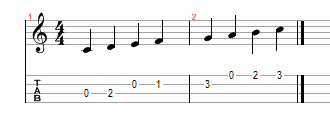
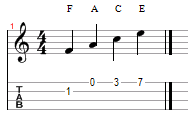
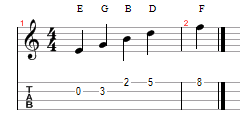
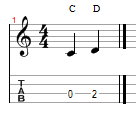
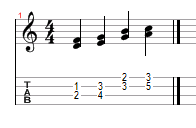
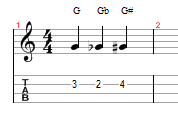
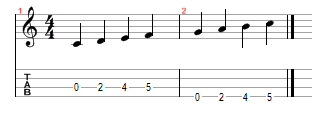



Sorry, Comments Are Broken Right Now